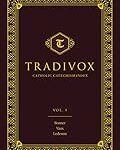For those of you conscientious Catholics who also happen to own Netflix accounts, I’m sure you have cringed in your couch cushions at least a couple of times as you scrolled through the selection of films available for streaming on the site. I certainly have.
Recently, I formed the habit of looking up films on a trustworthy film-review website to see whether or not they are morally sound. Oftentimes in the recent past, I have sat on the couch, TV remote limp in one hand and my phone in the other, simply baffled at the atrocities that these reviews described certain films to contain. I would abandon the idea of watching such films and move on. After a search that seemed to grow longer with each attempt, I would discover a film that was, in fact, morally-approved. I began to ask myself: What is the defining factor that in this judgement? The overall message of the film? However, a film can have multiple interpretations, some moral, others immoral, so I discarded this theory. Graphic violence or nudity shown in the film? While I still do not believe that nudity should ever be shown onscreen, I also concluded that this other theory was incorrect, for I could think of many morally sound movies that also depicted graphic violence (look no further than The Passion of the Christ). So, in a last ditch-effort to cure my seemingly incurable curiosity, I decided to examine the teachings of the Church concerning morality in film.
I was happily surprised to find that the Second Vatican Council’s “Decree On the Media of Social Communications,” titled Inter Mirifica, laid all my questions to rest.* Although I found that both of my initial theories had some truth to them, I also found myself asking a much broader research question: In a just society, what kinds of films should be censored and, once we know this, how should we go about censoring them?
I began by looking into my own moral obligations as a film consumer. The Council states that all consumers of media have “special obligations” to make “proper choices” when it comes to deciding which media to consume, declaring that a “proper choice demands that they [the consumers] fully favor those presentations that are outstanding for their moral goodness, their knowledge and their artistic or technical merit.”[1] On the contrary to what we should consume, the Council also states that we should steer clear of media that poses a threat to our spiritual well-being.[2] In just these two statements rest several further questions, so we shall explore them in detail.
First, while we should support movies that are “outstanding for their moral goodness,” and avoid those that are immoral, we must not forget that the Council also says that we should support movies that have “artistic or technical merit.” This is an important addition because, in paragraph seven of Inter Mirifica, the Council states that a film can make good use of depicting “moral evil.”[3] To add context to this, the words of the Council are that, “through the narration, description, or portrayal of moral evil,” the audience can come to a greater understanding of “the study of humanity.”[4] The Council further adds that by using dramatic effects, media can “reveal and glorify the grand dimensions of truth and goodness.”[5] How, we might be asking ourselves, can a film be outstanding for its “moral goodness” and, at the same time, display moral evil? This question can best be answered by looking at examples of individual films that succeed in portraying moral evil to achieve a good and truthful end.
A film that encapsulates these principles magnificently (and a personal favourite of mine) is the classic 1994 film, The Shawshank Redemption. The protagonist, Andy Dufresne is falsely convicted of murdering his unfaithful wife and her adulterating partner, and sentenced to life-imprisonment in Shawshank Prison.[6] The film depicts a great deal of moral evil, such as graphic violence and language, but it does so to depict the brutality of Andy’s prison life. Without showing the great extent of Andy’s suffering, the theme of his determination to hold onto hope in the face of such terrible suffering would not be properly communicated to the audience.
One concrete example from the film of how moral evil can be depicted to communicate a wholesome truth is when Brooks, an old prisoner who gets his bail after being in prison for most of his life, commits suicide because he cannot adapt to life outside prison.[7] The audience is led to despair a little bit when they see this; it makes us question if prisoners, after being behind bars for so many years, can ever hope to re-adapt to life in the real world. Later in the film, however, Red, another prisoner, also gets his bail after being in Shawshank for forty years. Red lives in the same apartment that Brooks killed himself in, and the words “Brooks was here” ̶ which the old prisoner carved himself before committing suicide ̶ are etched into the ceiling beam from which Brooks had hung himself. For a moment, we think Red is going to follow in Brooks’ path, for he stands on a chair and carves “So was Red” beside Brooks’ final words. After doing this, however, Red shows that there is hope for prisoners after they are released. He leaves the apartment, and travels down to a tropical beach in Mexico to live with Andy, who had earlier escaped from the torturous life in Shawshank.[8] In this way, The Shawshank Redemption follows the teachings of the Church by depicting moral evil to prove good and true moral themes.
There is an important distinction to be made here between films that use moral evil to depict a greater truth, and films that show moral evil for the gratification of unscrupulous passions. While Shawshank uses sequences of graphic violence to show the brutality of prison-life, other films simply show graphic violence for its own sake and to feed our passions. For example, all of writer/director Quentin Tarantino’s movies depict over-the-top violence because, according to Tarantino himself in an interview, “In movies, violence is cool. I like it.”[9] This is an abuse of media. Showing moral evil as an end in itself – in this case, for personal gratification – does not inspire virtuous growth in its viewers.
Inter Mirifica declares that artists (filmmakers included) should adjust their “artistic and technical aspects so as never to oppose the common good.”[10] Someone like Tarantino should ask himself: is the common good achieved by all of society finding gratification in depictions of intense violence? Furthermore, the Council states that all members of society “must hold to the absolute primacy of the objective moral order.”[11] Films that glorify violence contradict the common good and undermine the objective moral order. Thus, although the Church says that our own conscience must be employed in discerning which movies to watch, it also states that the largest amount of responsibility for censorship lies in the producers of the media, not the consumers.
The Council states that filmmakers (and other producers of media) “are in a position to lead the human race to good or to evil by informing or arousing mankind.”[12] With great power comes great responsibility, and nobody can deny the power of a well-made film, be it for good or evil purposes. Inter Mirifica further emphasizes the influence a film can have on the public when it states that, if the film is delivered to an unprepared audience, the audience may not have the prudence to know whether they should accept or reject its message.[13] Filmmakers should therefore be well-versed in their knowledge of morality, and they should be aware of what kind of audience they are producing their films for.[14] For instance, The Shawshank Redemption, although a good movie for adults, is not appropriate for children. Most children would not possess the maturity necessary to realize that the depictions of moral evil in the film serve a higher purpose. Therefore, a movie like Shawshank would prove harmful if shown to youthful audiences. Filmmakers, therefore, should prudently rate their films to ensure that only the appropriate audience views them.
What happens, however, if a filmmaker has an ill-formed conscience (or goes against his conscience) and creates a movie that should not be viewed by any audience? In cases like this, the public authority should step in.
The public authority, in this scenario, should be a branch of government that is bound by the same moral obligations as the media producers. That is, their main goal should be to uphold the “objective moral order” and the common good of society.[15] To achieve this goal, they should have the right to censor any movies that unprincipled filmmakers attempt to release to the public. Now, some people may view this as a violation of freedom. Thanks to many communist regimes of the past, censorship of art gets a bad rap. Nations like the Soviet Union did censor art, but unjustly. Art that did not reflect the communistic values of the regime was smothered by the government.[16] In a just society such as the Church encourages, however, censorship of art is good and necessary. Since many filmmakers cannot be trusted to produce morally sound movies (such as Tarantino), Inter Mirifica states that the public authority “is obliged, through the promulgation and careful enforcement of laws, to exercise a fitting and careful watch lest grave damage befall public morals and the welfare of society through the base use of these media.”[17] The Church, therefore, rather than condemning censorship, condones and even obliges the public authority to practice it.
Filmmakers that seek to produce immoral movies would see this as a restriction of their freedom. Because of an erring conscience, or a deliberate disobedience of what their conscience tells them to do, they would believe that their focus on immoral or graphic elements in their movies holds artistic or technical merit. The simple truth is that filmmakers like these fail to look “to the nature of what is communicated.”[18] By focusing on moral evil in their films, these filmmakers are not using it to serve a higher purpose; they are viewing the moral evil as an end in itself, from which some kind of gratification can be derived. So, by censoring films like these, the public authority “in no wise restricts the freedom of individuals or groups.”[19] After all, allowing certain filmmakers to produce movies that undermine the objective moral order does not make them “free” in any way; as Christ said, “The truth will set you free.”[20] Furthermore, the Conciliar Declaration on Religious Freedom, Dignitatis Humanae states that, by virtue of our dignity as human beings, “all men should be at once impelled by nature and also bound by a moral obligation to seek the truth.”[21] By censoring movies that drag people away from God, the public authority is actually giving more freedom to both the possible viewers of these films and their producers by directing them towards the truth.
Thus, we can conclude that films can prudently show moral evil in order to prove a moral truth beyond the evil itself; such films need not be censored. Any film, however, that depicts moral evil as an end in itself should be censored. Especially when it comes to film, censorship is something that begins in the conscience of each and every person. As consumers of movies, we should be aware of what is shown in a movie before watching it. By reading movie reviews by morally sound sources, we can inform ourselves on the moral quality of a film before we decide to purchase it. After gathering enough information on the film, we should listen to whether our conscience approves of it or not. In this way, we are each our own censor. The filmmakers themselves, however, hold an even greater responsibility for censoring. For, if their consciences forbade them from producing immoral movies in the first place, there would be no need for us to personally censor movies before viewing them. But, since many filmmakers are not well-enough versed in morality, it is necessary that the public authority censor any movies that contradict the objective moral order.
Sadly, however, we cannot count on our society’s filmmakers nor the public authority to properly censor films. But there is still much hope, for we can count on our own well-formed consciences to censor which movies we decide to watch.
*In the introduction to this document, the council explicitly states that movies are included under the broader category of Media of Social Communications. Thus, while most of the document speaks of media in general, the same teachings apply to movies specifically, which is the focus of this paper.
[1]Pope Paul VI, “Inter Mirifica,” http://www.vatican.va, December 4, 1963. 9.
[2]“Inter Mirifica”, 9.
[3]“Inter Mirifica”, 7.
[4]“Inter Mirifica”, 7.
[5]“Inter Mirifica”, 7.
[6]Darabont, Frank, director. The Shawshank Redemption, 1994, Castle Rock Entertainment. (0:5:05 to 0:6:00).
[7]The Shawshank Redemption. (1:02:13 to 1:02:26).
[8]The Shawshank Redemption. (2:10:50 to 2:11:05).
[9]Esther Zuckerman, “Everything Quentin Tarantino Really Thinks About Violence and the Movies,” The Atlantic, January 11, 2013. “https://www.theatlantic.com/culture/archive/2013/01/quentin-tarantino-violence-quotes/319586/”
[10]“Inter Mirifica”, 11.
[11]“Inter Mirifica”, 6.
[12]“Inter Mirifica”, 11.
[13]“Inter Mirifica”, 4.
[14]“Inter Mirifica”, 4.
[15]“Inter Mirifica”, 12.
[16] Wallach, Amei. “Censorship in the Soviet Bloc.” Art Journal 50, no. 3 (1991): 75-83. Accessed March 14, 2021. doi:10.2307/777221.
[17]“Inter Mirifica”, 12.
[18]“Inter Mirifica”, 4.
[19]“Inter Mirifica”, 12.
[20]John 8:32
[21]Pope Paul VI, “Dignitatis Humanae,” http://www.vatican.va, December 7, 1965. 2.











